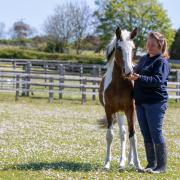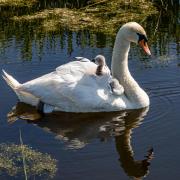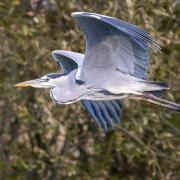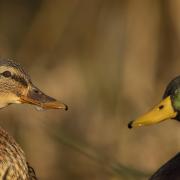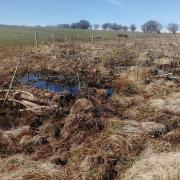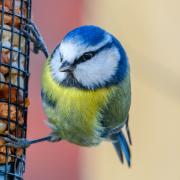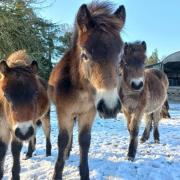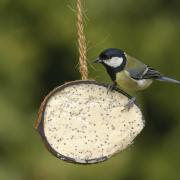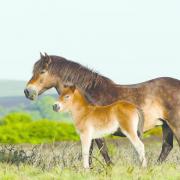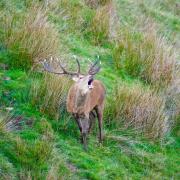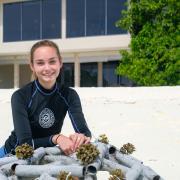A National Trust project has successfully bred the first beaver kit on Exmoor in more than four centuries. As part of the celebrations, we spoke to the head of project who revealed the new arrivals name as chosen by the public.
400 years ago, the last of the indigenous beaver population on Exmoor were lost due to mostly hunting and change in habitats. Now, a National Trust Riverlands project is looking to change that by reintroducing beavers to the countryside in order to help with rewilding and natural management of rivers, streams, and ponds. Their first major success occurred this week as a mother beaver was caught on camera with her new kit.

Riverlands Project
We spoke with Ben Eardley, project manager for the work happening at Porlock and the Holnicote Estate where the beavers reside. He explained that "the Riverlands is a project that is delivering the Trust’s land, outdoors, and nature strategy, and it’s looking at conservation and habitat development across the country."
But the beavers are just one aspect of this work which will change how the landscape looks drastically in the years to come.
"Our approach is that we fill the river in and then let the water find its own way. Then you get the water up and out, getting that complex geomorphology with lots of channels, pools, ponds – it's all really complex and messy which is great. Mess is good. You end up with a much richer system this way and beaver are a way of, in some cases, achieving that and maintaining it.
"Beavers can’t restore all of our rivers and streams because in a lot of cases they’ll be too degraded – too wide or too fast flowing and the beaver dams will just get blown out or else they’d struggle to establish or maintain them. So in some cases we might have to give them a helping hand and do some initial restoration work to create an area where they can establish themselves."

Holnicote currently has a handful of beaver enclosures where they are encouraging the critters to follow their natural instinct to cut down trees and build dams. At the moment, the government does not allow for wild release of beavers even though they recognise them as a native species. Instead, you must have a licence to keep them although Ben is hopeful this will change in the future.
The process of breeding the rodents can also be a bit more complicated than you'd think.
"All of the beavers for English release come from Scotland, they're beaver that otherwise would have been shot called conflict beaver. So they’re trapped and relocated to enclosures in England. There’s still not a great many around at the moment and therefore there’s not that many having kits.
"It’s also very difficult to trap whole families or a male and female couple. Because beavers are monogamous: once they pair up, they pair for life. With ours, like any animal, some settle relatively quickly and others take longer to get comfortable."
Not only that, but the new mother beaver had a very hard start in life. Orphaned at a very young age, the female beaver was nicknamed Grylls after the British adventurer and survivalist. Her successful breeding has been a long time in the making, says Ben.
"We had to wait until she was mature before releasing her and putting a male with her. Her mother died when she was very small and so she was lucky just to survive really but once she reached maturity we put Yogi in with her and they paired up and got on relatively quickly. We soon saw them grooming each other, messing around and nibbling each other so they settled really well. But it was by no means guaranteed that they would or were going to have kits."

The public have given the kit a name
After the nail-biting wait, they received confirmation early this week as the mother and kit emerged from the den for a late night swim. Both look very healthy and quickly captured the hearts of the nation. Over half a million people viewed the night-time footage in the first 24 hours and were quick to begin suggesting names for the new arrival.
After trawling through social media, rangers were able to narrow it down to four names which the public then voted on. They were Pip, Hope, Rashford, and Banksy.
In the end, it was Rashford, after the young footballer who shot to fame both on and off the pitch over the last 12 months, that the public chose. The name won with a landslide, taking home 49.9% of the votes. Bansky followed up second with 17.4%. The project have been delighted with the support show towards their breakthrough, Ben told us.
"We've been overwhelmed with the interest in the latest addition to our beaver family.
“It’s fantastic that so many people are just as excited as we are that our project to reintroduce beavers to this special landscape has been such a success.
“Rashford is a brilliant choice for this new addition to the family – and remind people of a moment in this country’s footballing history after an amazing tournament for the England team. The kit, the first to be born on Exmoor in 400 years, gives us hope for future generations.”

What's next
Although this is a definite step in the right direction, there is still a great way to go before the National Trust and these beaver's work is done. The Riverlands Project have been working with locals to make sure the community is involved as much as possible in the changes. The team believe this is the best way to ensure their work is as beneficial and successful as possible. They have been thrilled to see how positive the feedback has been from visitors from the surrounding area who have taken part in walks and talks. Ben thinks this is because of the fact beavers were always meant to be in Britain.
"We also found out this week that the animal of Porlock or at least on the church gates is a beaver. A kick back we often get is that beavers are not a real native species and they were never around here. But this is evidence they definitely were. There are places on Exmoor like Barbrook where the names are linked to beaver so we have that cultural evidence as well."
Unfortunately you won't be able to visit the beavers up close due to their shy nature and the delicacy of the project. However, one site, Paddocks Wood, has a path that goes right by the enclosure so you can also see some of the feeding sites where they’ve felled trees.
In addition, the National Trust is developing a nature trail app with Somerset Wildlife Trust. You’ll be able to download a route on to your phone with GPS tracking and follow it with written, audio, and visual content that will help to bring to life the work that they’re doing.
So, whilst you’re unlikely to spot a beaver for now, hopefully it won’t be long before they’re out and about in the wild and there’ll be opportunities to see them doing their thing just like in the 1600s.







